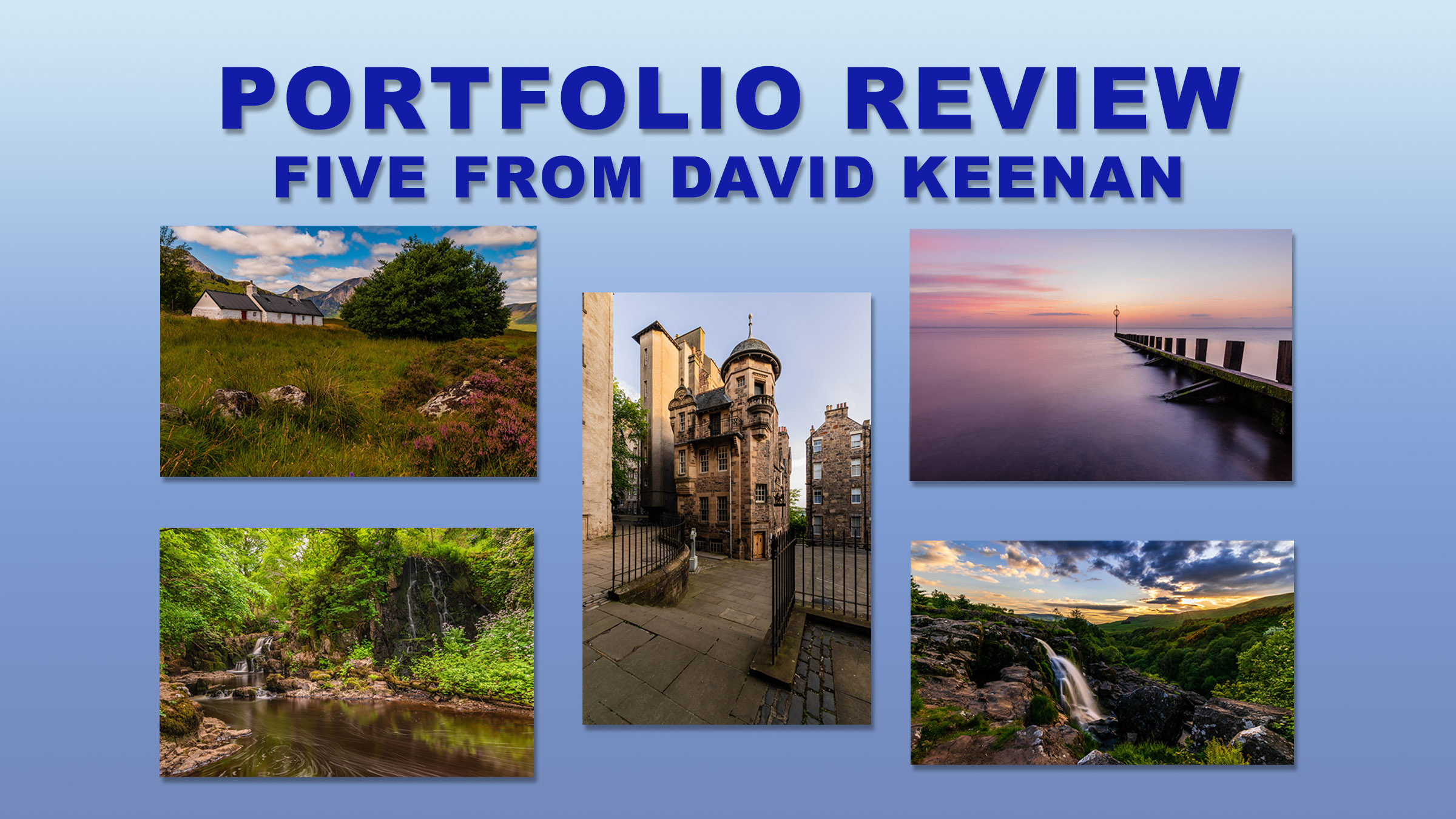August 11, 2021
Portfolio review – David Keenan
The first of what I hope to be a regular feature is a portfolio review of five pictures by recent Switch to Manual attendee, David Keenan

I get a buzz from seeing photographers who first attended my Switch to Manual workshop progress and taking better photos. At the end of last month, I reached out to my monthly newsletter subscribers to ask if anybody would like to submit five images. I’ve offered to review them and provide some constructive criticism. I’d like to thank the first brave volunteer, David Keenan, who has sent me some pictures to be the first of what I hope might be a regular feature.
Before starting the portfolio review, I thought it would be good to discuss the benefits and downsides of asking others to review your photos. I have been a member of a photography club in the past and entered pictures into competitions. Quite often, the judge would provide a brief commentary on the photos. Sometimes they could be excessively harsh with their comments, which could be pretty disturbing for a new or inexperienced photographer. My perspective is that a judge should be constructive and not just critical. However, the person receiving the criticism should also treat it as an individual’s view. Try to understand their perspective and then decide if what they have said is fair and think about what you need to change to improve.
The Photographer
David Keenan came on the Switch to Manual Workshop in April 2021 after starting to take photos a few months earlier when he received a Nikon D5600 for Christmas. Before attending the workshop, he had tried self-learning through online tutorials. As you’ll see from the images submitted, David enjoys photographing landscape and seascape scenes. He will be joining me in the Night Photography and Landscape and Seascape workshops in the next few months. I am impressed with the speed David has progressed from an absolute beginner to a competent photographer in just a couple of months and shows the benefit of getting out and shooting regularly. David regularly submits photos into the monthly Photo-Challenge that I run on Facebook and often does well in the public votes.
Photograph 1- Black Rock Cottage, Glencoe

We’ll start the portfolio review with an often photographed scene, the Black Rock Cottage in Glencoe. One of the difficulties of taking pictures of a famous location is that you repeat the same shot as everyone else or try and do something different to the thousands that came before. I think David has tried to go for the second option by using the rocks as foreground interest. Usually, you will see photographers try to include the white cottage along with one of the most famous mountains in Scotland, Buachaille Etive Mor. By choosing the shooting position here, we only get a glimpse of the mountain behind a large bush that dominates the scene. For me, the tree takes up too much of the image and leads me to think that it is the subject, which I am not sure was David intention.
Technically, the photograph uses a good choice of aperture (f/11) and an ISO setting of 100. However, I think there are one or two issues with the post-processing of the photograph. The conditions on the day look great, with a puffy, white cloud sky, and it was shot in daylight conditions. After the image has been processed, though, there is a warmth in the picture that I wouldn’t expect to see. The White Balance is set to 6850, whereas reducing this to around 5300 gives the shot a much more natural look. Another issue, which is easily done, is to over-cook the vibrance or saturation. The blue in the sky feels much darker than the conditions would have given, and I would personally like to see this dialled back a little. Finally, in the bottom left of the photograph, there are some bright yellow grasses that draw my attention to the edge of the image and away from the scene. I would either have done some gardening at the location or do it in photoshop and clone them out. I have added a quick edit below to compare David’s original to my suggestion.

Photograph 2 – Loup of Fintry
The next image is a scene I have photographed in the past, the Loup of Fintry near Stirling. There are many angles to shoot the falls, some of which need a bit of bravery to get to them with steep drops near the water’s edge. Given the limitations of the location, the composition works well, albeit I would ideally be a step or two to the right (if possible) to see more of the water flowing onto the rocks at the top of the falls. The eye is then drawn back and forth between the waterfall and the sunset, keeping the interest inside the image. The choice of shutter speed at 1 second is good, giving a smoky feel to the water while not losing all the detail. I don’t like to see the water looking like a block of white through the use of very long exposures, and David has avoided this well.

There are a couple of things I would suggest to try to improve a photo of this location. One that David can control and one that he can’t. Let’s start with the one there is less influence over but is a good learning point. David has shot the scene at a great time of day, and the sun is setting in a good position. However, the sunset isn’t as good as it could have been. Those big black clouds aren’t as attractive as a burning red sky. While David has done everything to get a shot, sometimes nature doesn’t play along with the game. I think that this is one of those times. Sometimes you need to decide if not quite perfect conditions show off your photography as well as they might.
The more influenceable change is again in post-processing. In my opinion, there are some overly dark elements to the photograph that don’t portray the scene as well as it would. Opening the shadows gives the overall image more balance and keeps the viewer looking inside the shot.

Photograph 3 – Portobello Sunrise
In contrast to the last shot, Mother Nature has given David some almost perfect conditions for him to exploit. This calming sunrise at Portobello Beach works very well. The shutter speed of 20 seconds has smoothed the water enhancing the minimalist feel of the photograph.

I think this shot works well, and I could quite happily leave it as David submitted. One of the comments made when he sent the photographs over was that he struggles with using the rule of thirds in his composition. With a slightly tighter crop and losing the very top of the sky, David could have brought the horizon down to lie on the top third of the image. Both crops work well, and David should be very proud of this picture.

Photograph 4 – The Writers Museum
I have been photographing this scene of the Writers Museum in Edinburgh for a forthcoming book. It is a pretty building, and there are many different ways to try and capture it. I can see what David is looking to achieve within the shot. The steps and fence provide a nice leading line to the building. It does make me want to step into the scene and follow what David is trying to put over. However, I think this shot struggles to manage the distortion caused by the lens’s wide-angle.

Potentially, David could return to the scene and use a different kind of lens known as a tilt-shift. They are something that architectural photographers often use to manage distortion better. The downside of them is they are specialist lenses and, as a result, are very expensive. The cheaper option would be to shoot the scene as a vertical panorama to help resolve the distortion issue.
Of the five photographs submitted for this portfolio review, I think this is the weakest, but it is good that David is going out and trying to improve his creativity in how he looks for subjects. The issue is mainly the technical challenge in shooting the scene, but it is still a good attempt given David has only been shooting for eight months.
Photograph 5 – Linn Jaw
The last of the five pictures submitted for the portfolio review is, in my opinion, the best of the five. I’ve never been to this particular location, but it’s on my list of waterfalls to visit. Shot at the end of June, it could be pretty easy to get to this location and suffer from harsh lighting conditions on a sunny day. David has arrived when the light is quite soft in the late afternoon, so there is a nice even light across the scene.
The choice of shutter speed (11 seconds) brings out the movement of the water as it flows from the waterfall downstream, and it creates a nice swirl effect in the bottom left-hand corner. It may have been nice to have pointed the camera a little further downwards (or zoomed further outwards) to show more of the circular motion in the water. I also like the use of a circular polarising filter to help accentuate the reflection of the foliage in the water. From a technical perspective, I think that this is executed really well.
A minor point is that I noticed what looks to be a small water drop in the top right of the image. There is a definite lightness over the tree that is growing from the cliff face. It’s easy to miss these when you are working in a challenging environment such as this gorge. However, it is easily fixed using the burn tool in Photoshop. While we are editing and talking about minor irritants, I am slightly distracted by the flower coming into the side of the shot on the bottom-left. Again, it would be pretty easy to take this out in Photoshop.
Most of the comments in this final picture are very minor, and David should be very proud of this picture. Well done!

I hope you’ve enjoyed looking through David’s photos as much as I did. I also hope that, as well as the comments being specific to David’s pictures, they are generic enough to give pointers in ways to improve your photography. I do have to thank David for subjecting his photos for me to review. If you’re at a point in your photographic development where you think you might benefit from a similar exercise, drop me a mail with five of your best images, and I can include them in a future posting.
Give us your feedback
If you’ve got any questions or comments, leave them below. You can sign up for the Edinburgh Photography Workshop monthly newsletter, where you’ll get regular updates on exciting things happening in photography and some great tips. Sign up by clicking here.
About the author
As well as running Edinburgh Photography Workshop, Rich Dyson is a professional photographer. His photographs are regularly used in newspapers such as The Times, Guardian and Daily Telegraph. He also had two solo exhibitions as well as being featured in a members sponsored exhibition in the Scottish Parliament. You can see and buy his photography at richdysonphotography.com
